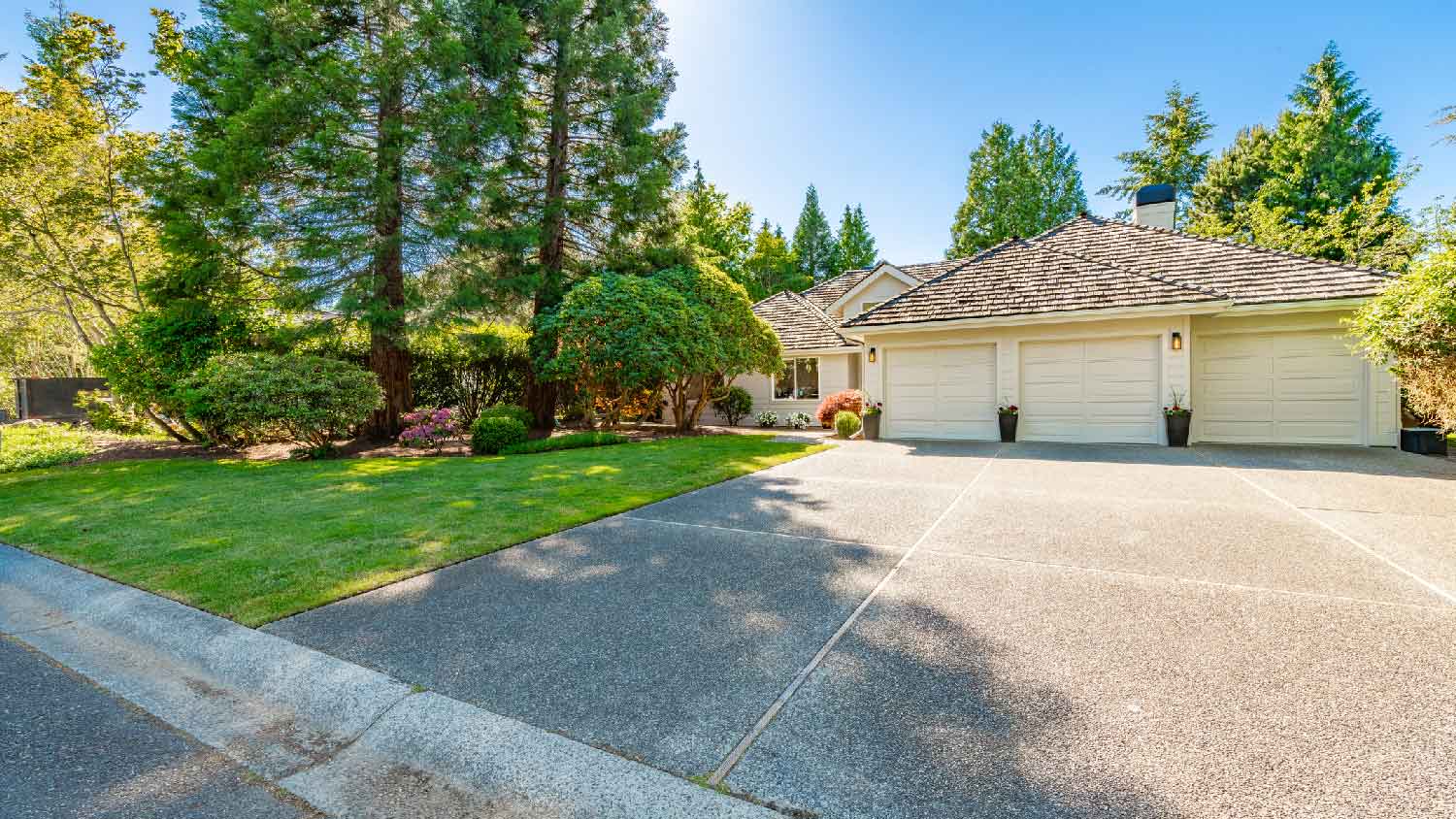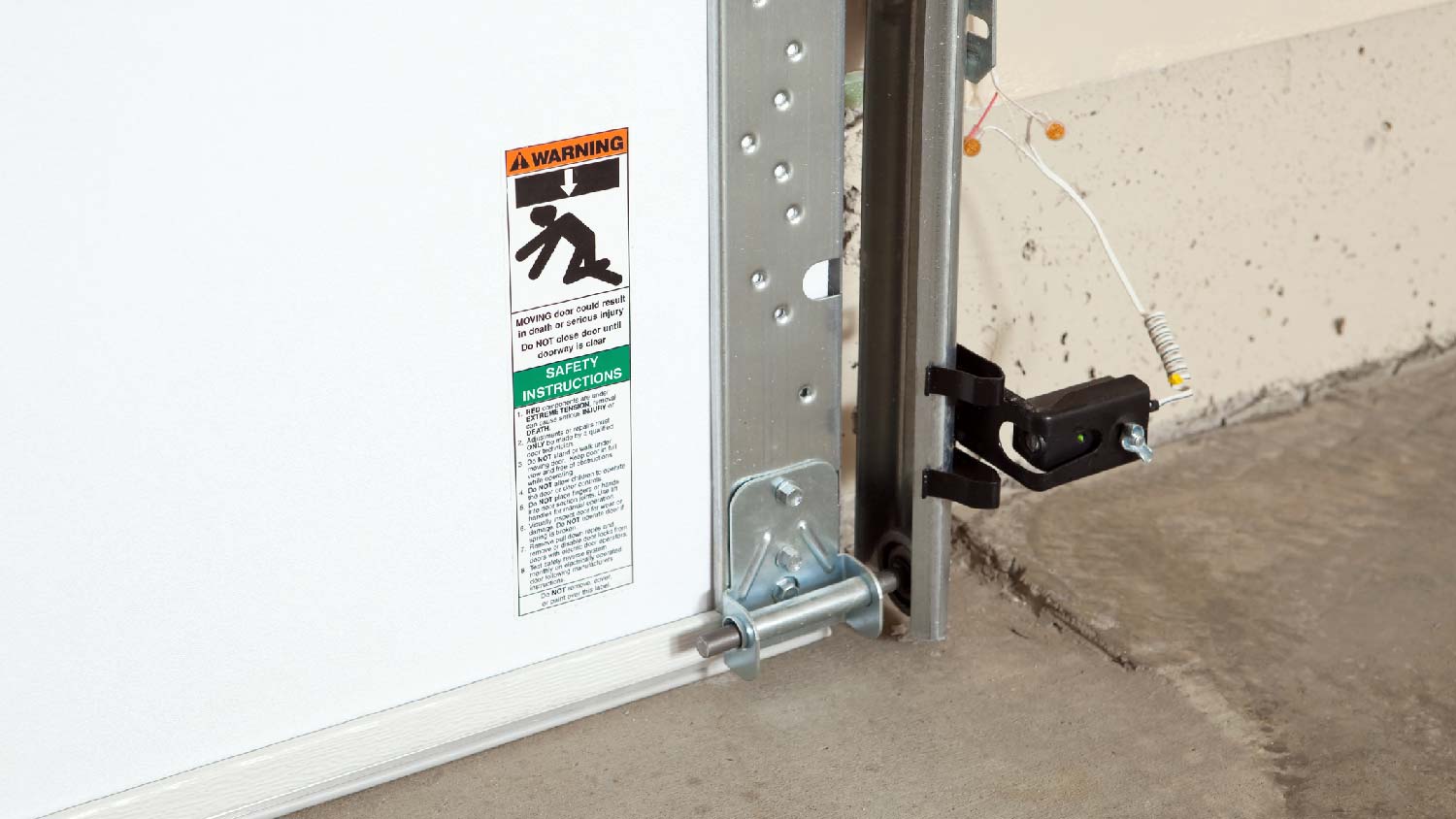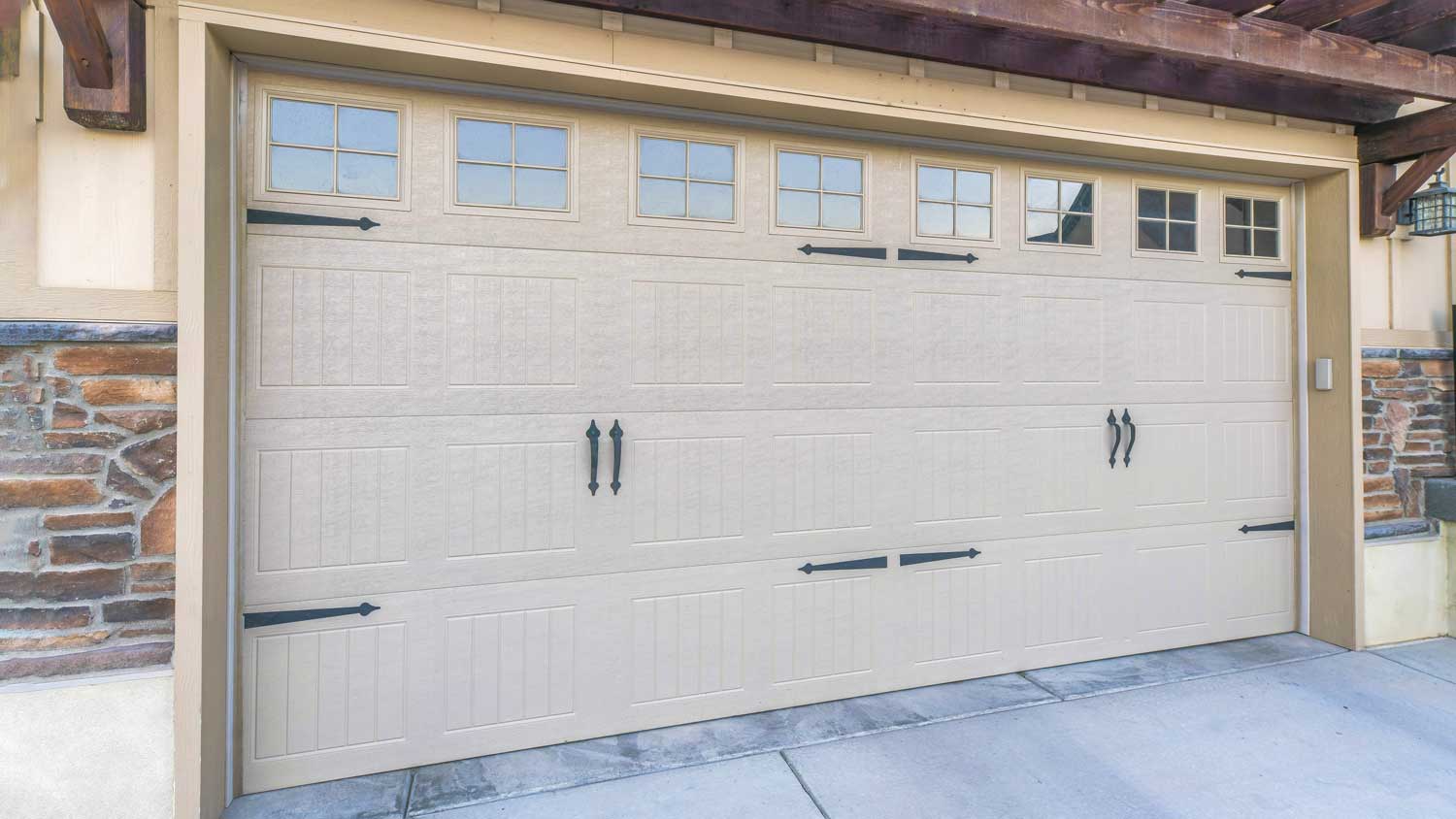Why Is My Garage Door Beeping? Discover 3 Common Causes and Solutions
Silence your noisy garage door in seconds


Your garage door might beep if something is blocking the sensors.
It could also beep if the sensors are dirty or misaligned.
If you lose power, your garage door may switch to its battery backup.
You might also hear beeping if the backup battery is low or dead.
If DIY fixes don’t work, call a garage door repair pro.
Why is my garage door beeping? While the exact reason can vary depending on your garage door’s brand and model, there are a few common reasons that garage doors beep. Below, we’ve highlighted three of the main causes, as well as tips for fixing each one.
1. Sensor Issues

The sensors are the parts of a garage door that stop the door panel from closing if there’s something in its path. When that happens, the garage door might beep to alert you of the obstruction.
Also, since sensors are low to the ground, they can easily get dirty or kicked out of alignment. In either of these cases, the sensors may stop working properly—and, as a result, trigger a beeping sound in your garage.
How to Fix It
First, make sure there’s nothing blocking the sensors. If there’s something in the way, remove it and see if that stops the beeping. If not, grab a dry microfiber cloth and carefully clean the sensors.
Do you still hear beeping? Try aligning the garage door sensors:
Disconnect the power to your garage door opener, either by unplugging it or shutting it off at the breaker.
With a screwdriver, loosen the screws on the sensors’ mounting brackets. Don’t remove the brackets; just make sure there’s enough wiggle room for the sensors to move up and down.
Use your hands to pull the sensors down toward the ground. Get them as low as you can without the screws coming out.
Cut a piece of string several inches longer than the space between your sensors.
Tie the string to one sensor and bracket. Stretch it across the garage door opening and tie it tightly to the opposite sensor.
Hold a level on top of the string to confirm that it’s straight. If not, slide each bracket up slightly until they’re lined up.
Tighten the bracket screws.
Before cutting the string, double-check that it’s level. If not, repeat the process.
Once the sensors are aligned, remove the string and connect the power.
2. Battery Power Activation
Garage door openers usually plug into an outlet. However, if that outlet can no longer provide power, some garage door openers will switch to a backup battery. When that happens, the door might beep to tell you that it’s running on the battery.
How to Fix It
To start, you’ll need to figure out why your garage door lost power. Sometimes, this will be obvious (like during a power outage). If that’s the case, wait until your power comes back. At that point, the garage door opener should switch power sources and quit beeping.
However, if other parts of your house still have electricity, you might have tripped a circuit breaker in your garage. Here’s how to reset it:
Unplug all appliances (including the garage door) and turn off all lights linked to the tripped breaker.
Find the tripped breaker in your electrical panel and flip it to the “off” position.
Wait one minute.
Turn the breaker to the “on” position.
If it remains in the “on” position, the power should return.
Heads up: If the breaker keeps tripping, you may have a bigger electrical issue—and you should contact a local garage door repair pro.
3. Low or Dead Batteries

When your garage door opener remains in battery backup mode, the battery will eventually drain. You might hear more frequent beeping as the battery runs low or dies.
How to Fix It
If it’s plugged into an outlet but still beeping, you’ll need to replace the backup battery. Check your user manual for battery specifications and step-by-step instructions. Generally, the process is as simple as removing the old battery and inserting the new one. Don’t forget to dispose of the battery properly.
When to Call a Pro
Fixing any of these three garage door problems is fairly straightforward. However, if you’ve tried these tips and still hear beeping, you may need to contact a professional who fixes garage doors. Not only do these experts understand the ins and outs of garage door systems, but they also know how to work with electricity and heavy objects safely.
Frequently Asked Questions
There are several reasons why you might need to reset your garage door opener. For example, when you move into a new house, it’s smart to reset the system so the previous occupants can’t open your garage door. You might also want to reset it if you’re having issues with the remote or forget the passcode on your remote entry keypad.
With good maintenance, garage doors can last for 15 to 30 years. You might consider a replacement if yours is approaching that age and struggling to work properly. For instance, if your garage door is slow to open or close (or doesn’t open or close at all) or is loud even after lubricating the parts, you might need a new one. Similarly, if it’s sagging, uneven, or has other visual signs of wear and tear, it may be time for an upgrade.















